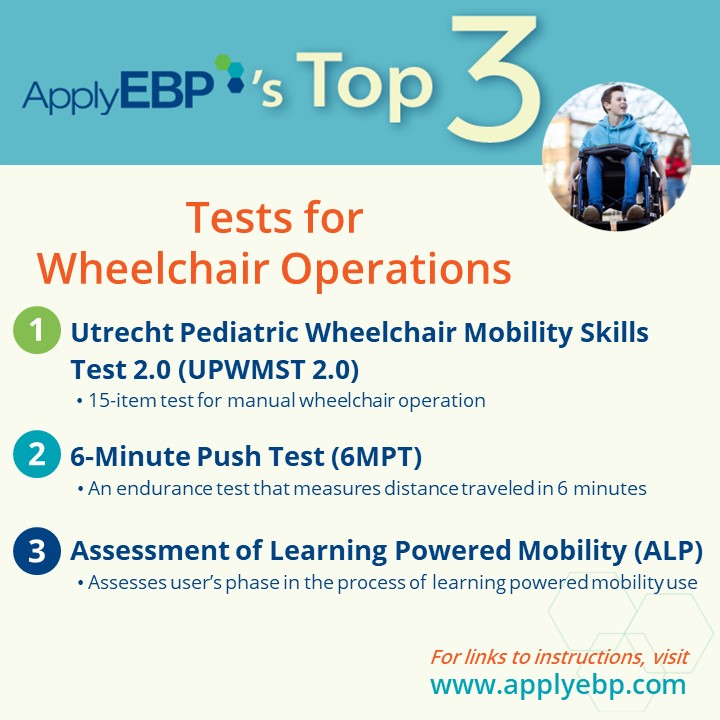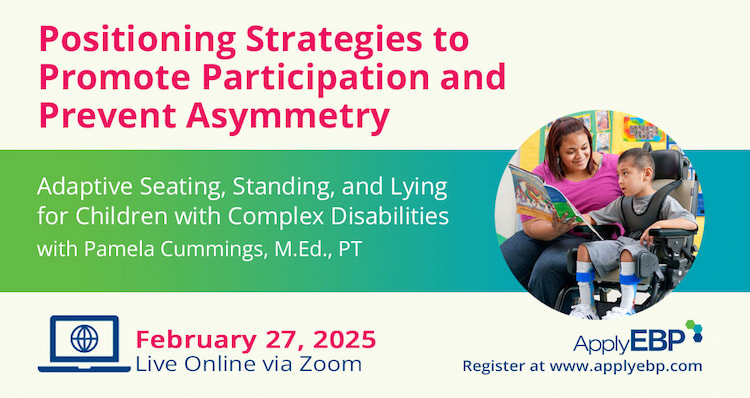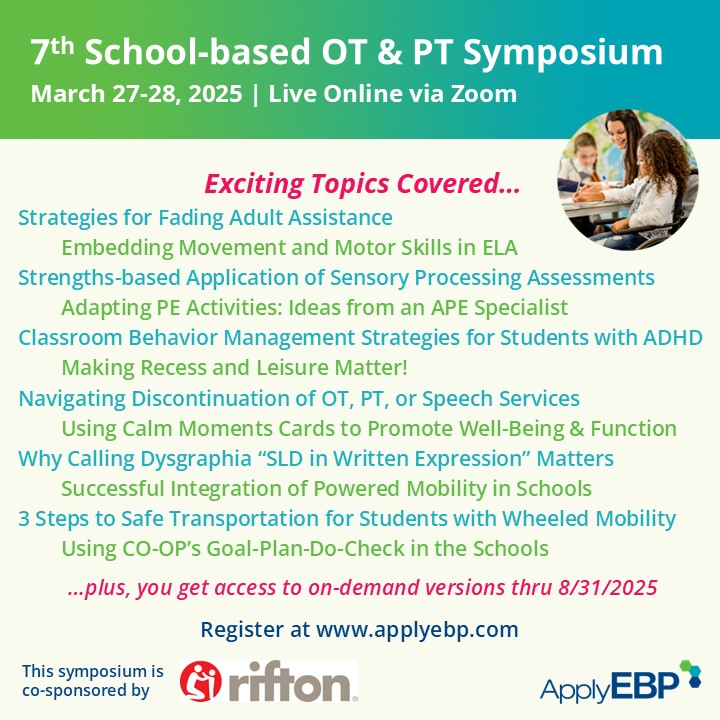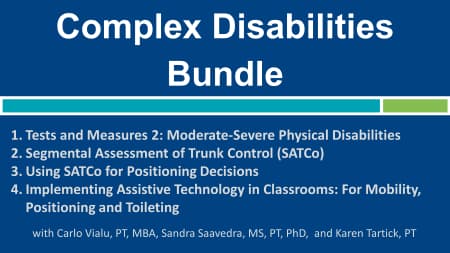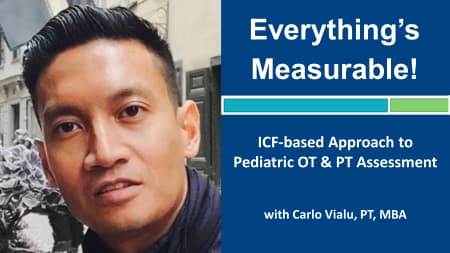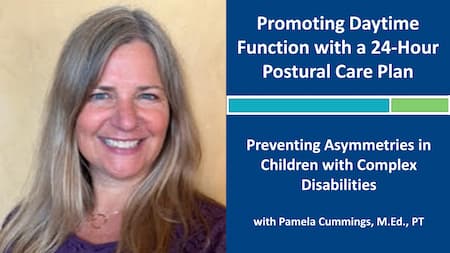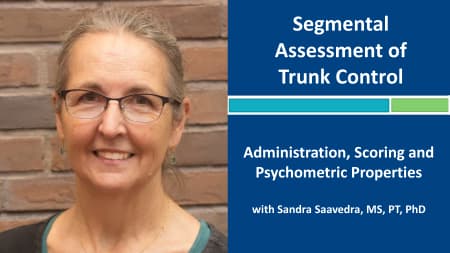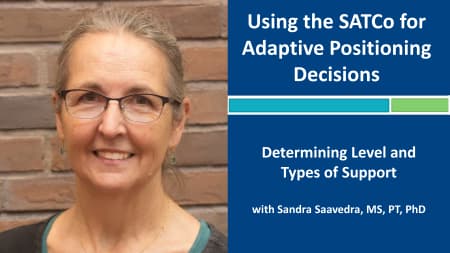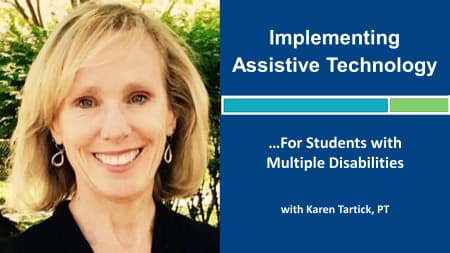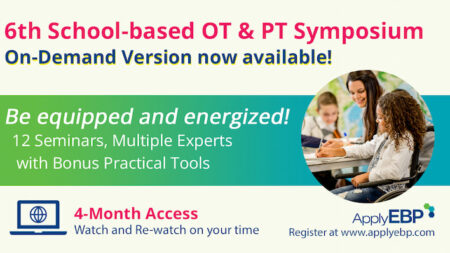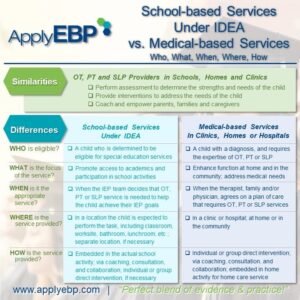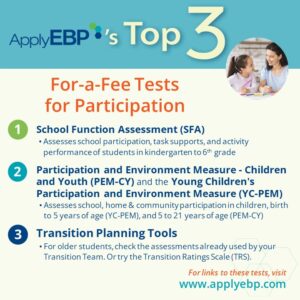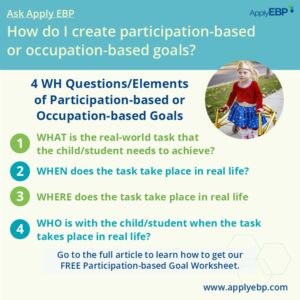Ask Apply EBP
Top 3 Wheelchair Operation Tests
Note that this article is part of a series of articles on assessment. If you have not done so, first, read this articles:
-
-
-
- Must-Have Test and Organizing Your School-based Assessment – discusses the 5 critical reasons for assessing participation first
- 3 Principles for Selecting Tests – discusses the 3 principles to use when selecting tests at the activity and body function & structure levels
-
-
Q: What are the best tests…for Wheelchair Operations?
Here are our 3 favorite standardized tests for wheelchair operations.
1. Utrecht Pediatric Wheelchair Mobility Skills Test 2.0 (UPWMST 2.0)
15-item test for manual wheelchair operation, from propulsion, turning, ascending and descending ramps and platforms, holding a wheelie, and more
-
-
- Test instruction: Click here for the UPWMST items with instructions
- Equipment needed: none other than client’s wheelchair
- Why we like this test: It is the only comprehensive manual wheelchair operation test that has been tested for reliability and validity in children
- What to note: You will need to find the right locations to conduct some items, such as the right platform heights and doorstep. It is a criterion-referenced test.
-
2. 6-Minute Push Test (6MPT)
Based on the 6-minute walk test, the 6MPT is an endurance test that measures the total distance traveled via wheelchair in 6 minutes on a 10-meter course.
-
-
- Test instruction: Click here for the 6MPT procedures
- Time for administration: 10-15 minutes
- Equipment needed: timer, floor tape, cones, heart rate monitor
- Why we like this test: Measures the ability to wheel for longer distances.
- What to note: Wheelchair weight has a big influence on the distance; hence, we do not recommend using “norms” or averages from studies.
-
3. Assessment of Learning Powered Mobility (ALP)
The ALP assesses the user’s actual phase in the process of learning powered mobility use.
-
-
- Test instruction: Click here for the form and procedures
- Equipment needed: bench with strapping for pelvic support
- Why we like this test:
- It includes the whole continuum of learning from novice to expert; therefore, it can be used with very young users, very new users, and users with severe cognitive difficulties.
- It can also be used to figure out how to facilitate progression to a higher phase.
- What to note: There are no scores, and no “pass” or “fail.” Because of this, it is a refreshing test. It focuses on the child’s learning phase no matter how low.
-
Want to learn more? Check out…
References:
Nilsson, L., & Durkin, J. (2014). Assessment of learning powered mobility use—Applying grounded theory to occupational performance. J Rehabil Res Dev, 51(6), 963-974.
Sol, M. E., de Groot, J. F., Zwinkels, M., Visser-Meily, J. A., Kruitwagen, C. L., & Verschuren, O. (2019). Utrecht Pediatric Wheelchair Mobility Skills Test: reliability, validity, and responsiveness in youths using a manual wheelchair. Physical Therapy, 99(8), 1098-1106.
Verschuren, O., Ketelaar, M., De Groot, J., Vila Nova, F., & Takken, T. (2013). Reproducibility of two functional field exercise tests for children with cerebral palsy who self‐propel a manual wheelchair. Developmental Medicine & Child Neurology, 55(2), 185-190.
Find More Answers to Your Questions in Our...
Featured School
Symposium
6th Online School-based OT and PT Symposium - On-demand Version
- Watch and re-watch on your own time
- On-Demand Version
- OTs, OTAs, PTs and PTAs
- $399-449
Featured Live
Workshop
Featured On-Demand
Webinar
Promoting Daytime Function with a 24-Hour Postural Care Plan
Featured Webinar
Bundle
Complex Disabilities Bundle
Have a question?
Submit here…
*Clicking submit will send your question directly to our email inbox. Your name and email will let us know that your submission is real (not spam). We will not include these in our posts, unless you tell us to include your name. Please read our privacy policy here.
All infographics and videos on www.applyebp.com are intellectual properties of Apply EBP, LLC
You may use the infographics and videos for free for any non-commercial, educational purposes. Please cite the source as “Apply EBP, LLC” and a link to the source article. If you plan to use any infographic or video for commercial purposes (i.e., for profit), please email Carlo@applyebp.com to obtain a written permission. Permission can be granted on a case-by-case basis.

